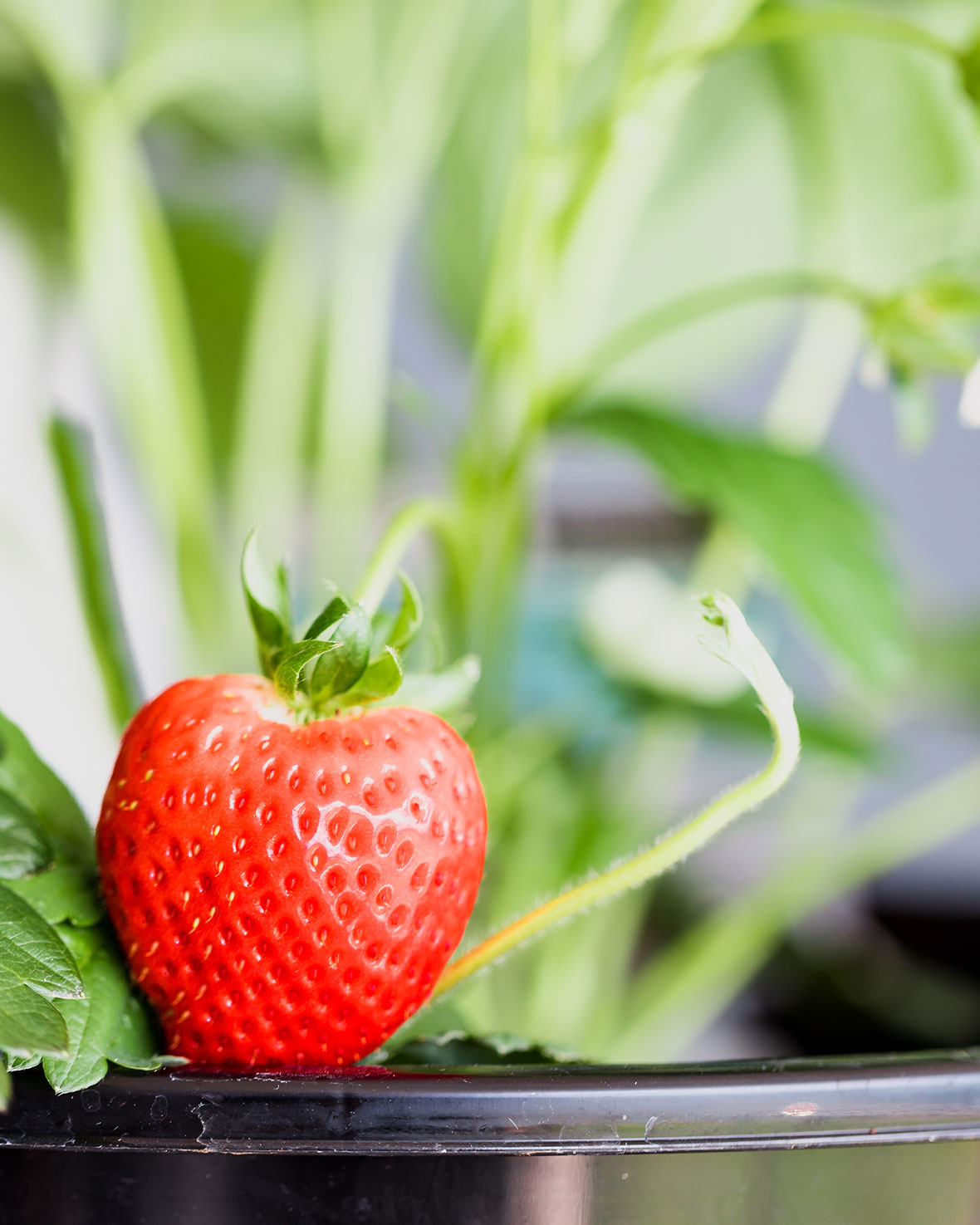Strawberries are delicious, and deserve a place in every home garden. They are easy-to-grow, short-lived perennials, producing fruit within a few months of planting. The plants are small, only 30-45cm tall and wide, so they don’t need much room at all. Pots are fine. But you do need several plants if you want a reasonable crop.
Strawberries are a member of the Rosaceae family, along with roses, plums, apricots and apples. The pretty flowers are similar to these other fruits, being a simple, single, pink or white affair. The fruits of strawberries are quite different, however, because the seeds are on the outside of the fruit, rather than in the centre.
The many varieties of the strawberries we know and love today are all descended from a strawberry bred in Brittan, France, in 1740. It was a cross between the flavoursome Fragaria virginiana from North America and the large-fruiting Fragaria chiloensis from Chile. All the varieties we now grow are Fragaria x ananassa.
Strawberries are extremely high in vitamin C and have very high anti-oxidant and anti-inflammatory properties. They are highly perishable, and research has shown that the extraordinary nutritional properties diminish after 2 days of storage. So fresh is definitely best.
Like most fruiting plants, strawberries need a sunny position in a garden, raised bed, pots or hanging baskets. Avoid soil that has previously grown other berries or members of the tomato family (Solanaceae) to reduce the danger of viral diseases. Enrich the soil with plenty of organic matter, or use premium potting mix in pots.
Strawberries prefer a slightly acidic soil of pH 5.0 – 6.0. They need plenty of phosphorous and potash to be productive, so use a balanced organic fertiliser.

Plant young plants or certified virus-free runners from winter through spring. Mulch with sugar cane or lucerne to keep the fruit off the ground. Protect the fruit from snails and slugs by using pet-friendly snail pellets, crushed egg shells, or your favourite snail deterrent. Plant a few different varieties as there are variations in fruiting time as well as in flavour.
As soon as the plants begin to flower, feed them with some potash to improve the quality of the fruit.
Good companion plants for strawberries are beans, borage, chives, leeks, lettuce, French marigolds, onions, pyrethrum, sage and spinach. Broccoli, cabbage and other brassicas make bad companions for strawberries.
Strawberries can be prone to fungal diseases such as powdery mildew, which will spoil the fruit. Minimise the risk by avoiding overhead watering, ensuring plenty of airflow. In my nursery, we find that regular use of a product called Sea Energy, derived from sea water, is very effective in preventing fungal conditions. Seaweed or fish emulsion will also be helpful. If you notice any signs of fungal disease, spray immediately with certified organic Eco-Fungicide.
Strawberry plants produce runners – free plants! Don’t be tempted to leave them on the plants as they will limit fruit production. Pinch them off and plant them elsewhere, or give them away. Each plant will produce fruit for 2 -4 years, after which time they will need to be replaced.